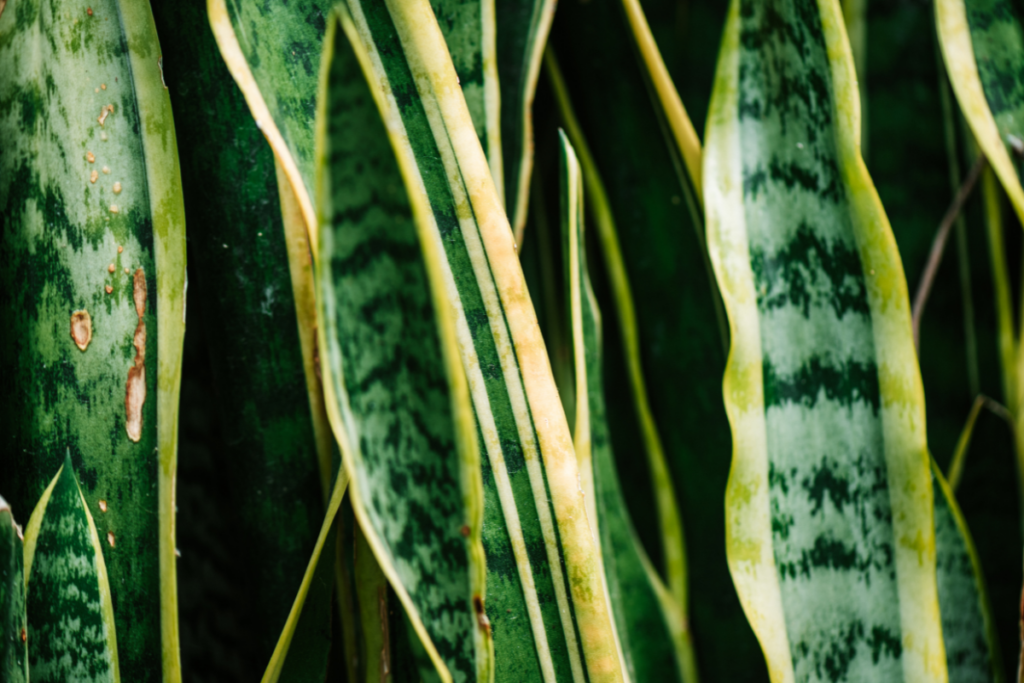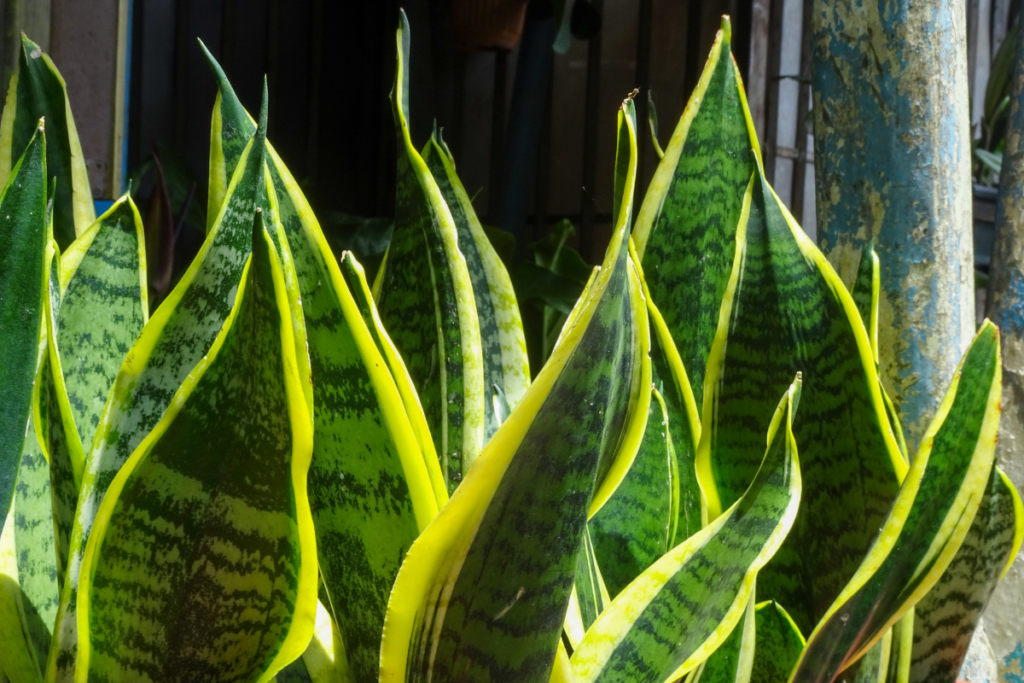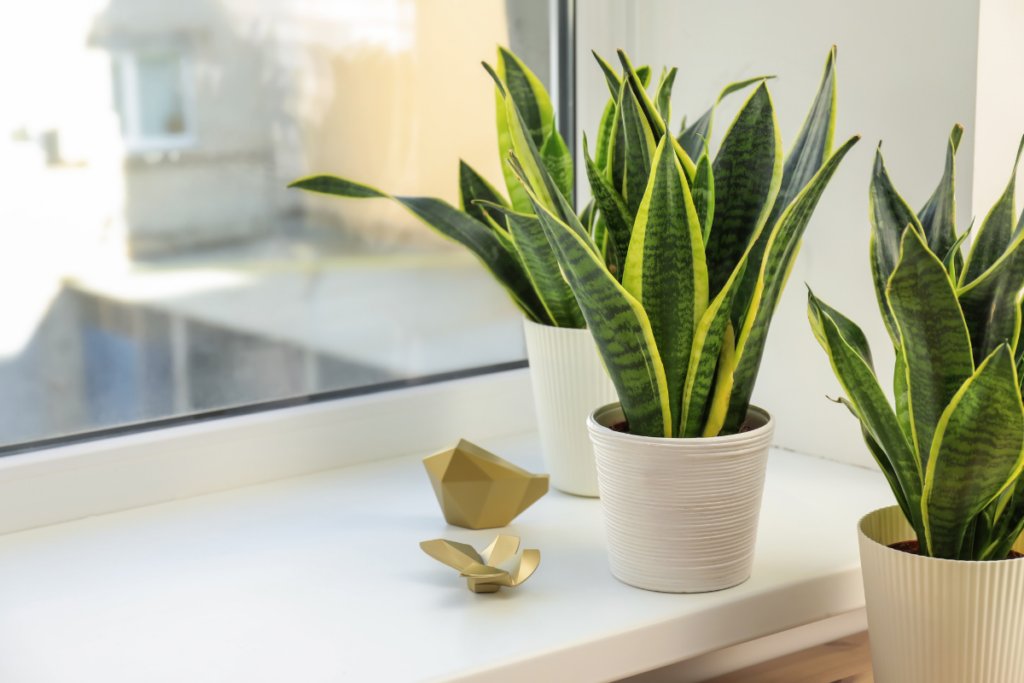Have you ever questioned why your Snake Plants’ brilliant foliage curl despite your love and attention? If you are cultivating Snake Plants or Sansevierias, you could often run into the issue of the leaves curling. Sometimes, you are left unsure about the first step to take. Let’s take a closer look at snake plant leaves curling reasons and solutions.

In general, snake plant leaves curling is caused by overwatering or underwatering, excessive light exposure, insect infestation, or even repotting stress. Repot the plant and water only until the top 1-2 inches of its potting soil is already dry if root rot disease is present. To get rid of pests, maintain the plant between 70 and 90 °F and clean the plant leaves with organic neem oil.
If your plants are curled up, you can’t really boast about the lovely leaves, can you?
Do not worry! This specific article will lead you throughout the process of resolving the issue step-by-step.
Read on to learn the main causes of your eye-catching plants’ curling and some preventative measures you may take.
RELATED: 21 Types of Sansevieria – Indestructible, Exotic, and Elegant Air Purifiers
What Are The Causes Of Snake Plant Leaves Curling?

Snake Plant leaves curl due to several causes. It could be caused by water quality issues, incorrect watering techniques, excessive watering, or underwatering.
Other potential causes of Snake Plant’s leaves curling include improper fertilizer application, temperature, humidity, light, pests, illnesses, and even the age of your plant.
1. Watering Problems
Watering is often a make-or-break situation for plant parents. When done according to the right timing and dosage, it will undoubtedly help any plant grow. However, it won’t help your plants if it’s done late or improperly or excessively.
Curled leaves on Snake Plant may indicate insufficient hydration. However, to pinpoint whether under- or over-watering is to blame would be difficult. This is because they exhibit similar symptoms.
Overwatering
Try to search for these additional indications if you think that overwatering is the root of the problem. Early warning signals include yellow foliage and eventual leaf loss. If you observe both of these together with curled leaves, then overwatering is definitely to blame.
You must immediately inspect your plant for root rot if you have overwatered the Snake Plant. First, take your plant out of the pot. You should see roots that are solid, pale, and smell earthy. Roots that have rotted are mushy, black, and have an unpleasant odor. Trim these decayed roots right away, then fix your watering.
Underwatering
In general, it’s pretty simple to see a plant that needs more water. The leaves will undoubtedly get crispy, curl, and wilt if the soil becomes too dry and cracked. Completely dried-out leaves have little possibility of growing again. But, on the other hand, if they are still soft, watering will cause them to reactivate.
You should bottom-water your plant if you think that the curling of your Snake Plants is the result of underwatering. This is accomplished by allowing your plant to sit in a water container and completely absorb water.
Keep in mind not to over-water your plant. Additionally, you may also do top-watering. Although, you must water gently and ensure that the water reaches the bottom completely without drowning your plant.
Water Quality
Since Snake Plants are often insensitive to water quality, this is not a frequent reason for leaf bending. Leaf curling, however, is unavoidable when tap water is polluted with chemicals or minerals at excessive concentrations.
Dechlorinate your tapwater first if you believe this is the problem. You may do this by letting your water stand for a week or two before using it. You may also switch to a water source that is more pure, such as filtered water, rainfall, or spring water.
2. Humidity Problems
Snake Plants are tough plants that can survive in low humidity, yet prolonged dry air may still cause their leaves to curl. Their leaves may even begin to droop and develop extremely slowly as a result.
Increase the humidity surrounding your plant to solve this issue. By placing water-filled trays next to your plants or arranging your plants together, you may create an environment with high humidity. You might also place your plant container on a tray that has stones and water.
Consider purchasing a humidifier to assist supply humidity if your symptoms continue, particularly during the dry and chilly months.
RELATED: How To Propagate A Snake Plant: What You Need To Know
3. Light Problems

Low light levels are known to be tolerated by Snake Plants. However, with that being said, too much sunlight is the major source of their lighting issue. Inevitably, leaves exposed to direct sunlight will curl and, in the worst cases, burn.
To solve this issue, move the plant to a new position that is still bright but shielded from the sun. A sheer curtain may assist in preventing damaging solar rays when grown inside. They may flourish under artificial lighting as well. Just make sure to keep them away from the light source itself.
Your plant’s leaves will gradually become better after you’ve fixed the lighting issue. Therefore, it’s crucial to evaluate your lighting, particularly for your indoor plants. Make sure you are aware of the requirements of your plants and how to satisfy them.
Read about the proper light requirements of Snake Plants.
4. Fertilization Problems
Overfertilization
Your Snake Plants aren’t renowned for being heavy feeders. In fact, if their soil is already rich in organic matter, they may thrive without additional fertilizers. Overfertilization is often the source of nutrition issues.
When there is an excess of fertilizer in the soil, leftover salts accumulate and seep through the surface, damaging the roots. Your Snake Plants will often have curled leaves and brown stains on the surface of their foliage as a consequence of this.
Apply your fertilizer just once or twice throughout your plant’s growth season, which is normally summer and spring, and always dilute it to half the suggested concentration. Winter is not the time to fertilize.
Flush the soil with water if you think overfertilization is to blame. Then, drain the extra water via the drainage holes. Repeat this multiple times to fully drain out any leftover buildups.
Underfertilization
Even though it’s unusual, your Snake Plants might get underfed, which would explain the curling of the leaves. Your plant’s margins will become crispy and curled if it is malnourished. A suitable fertilization plan will solve this issue. Keep an eye on your fertilization schedule if you feel your plant needs more fertilizer.
Check the pH of your soil at the same time. Your Snake Plants can absorb nutrients to their fullest potential in a slightly acidic growth medium. An extremely alkaline soil prevents plants from absorbing nutrients.
5. Temperature Problems
Snake Plants are tropical plants, thus they aren’t very tolerant to extreme temperatures. Leaf curling and black patches on leaves are symptoms of the temperature shift. After just one week of exposure to a new setting, this could become apparent.
Sansevierias like temperatures between 60 and 75 degrees Fahrenheit as their optimal range. The plant is at risk when temperatures drop below 50 degrees Fahrenheit. Whether it’s hot or cold, drafts might harm your Snake Plants.
There are Sansevieria species, nevertheless, that can endure colder temperatures. This is because they were developed to endure the cold climate.
6. Pests Problems
Leaf curling, mottled spotting, and misshaped plant development are all symptoms of insect infestation. This issue often arises because your Snake Plant is prone to insect damage. The good news is that this issue can easily be solved.
Aphids, scales, spider mites, and mealy bugs are the typical pests of Snake Plants. You may use a magnifying glass or even just your unaided eye to determine if there is an infestation. Look between the plant nodes and under the leaves.
If pest infestation is verified, treat your pest issue using insecticidal soaps, neem oils, or other horticultural oils that are readily accessible. It has also been shown to be safe and effective to spray diluted alcohol or diatomaceous earth on these pests.
Since pests are a frequent issue with plants, it might be beneficial to inspect your plant often whenever practical. If they are discovered early, the issue is always simpler to resolve.
7. Diseases Problems
Even while Snake Plants like moist but not soggy environments, it might be problematic if the humidity is not correctly controlled. Because fungi and other disease-causing bacteria like damp environments to grow, this promotes plant illnesses.
The Snake Plant is not immune to bacterial, viral, or fungal infection. Leaf withering, curling, and yellowing are the main signs. On the leaves of diseased plants, black dots with a yellowish halo are often seen.
To lessen this issue, separate the harmed plant and get rid of the infected components to stop the illnesses from spreading. As they battle the illness, make sure your plants aren’t under any stress. To treat, use fungicides that are readily accessible on the market.
Fungicides are not always totally successful, therefore, the best method to deal with this issue is to maintain Snake Plant healthy and ensure the surrounding environment is clean and well taken care of.
8. Incorrect pH Level
Any soil used for indoor plants must have the proper pH. Because the pH of the soil affects how readily available the soil’s nutrients are. For snake plant soil, a pH of between 5.5 and 7.5 is ideal.
Magnesium (Mg) will not be present in acidic or low pH soils. Therefore, chlorophyll pigments, which are necessary for photosynthesis, cannot be produced by the leaves. Therefore, signs like curling and yellowing will be present on lower or older leaves.
To be certain that the issue exists, you must measure the soil pH level. You may use one of the many pH testers on the commercial market. You should raise the pH if it is too acidic or low. It is quite simple to do via addition of hydrated lime to the plant soil.
On the other hand, mix sufficient amounts of lemon juice to water before watering if the pH level is greater than what is advised. It will eventually assist in lowering the pH level.
RELATED: Snake Plant Problems: Common Sansevieria Problems and How To Fix Them
9. Root-Bound Plants
You must adjust the pot size in accordance with the age of your snake plant. If the pot size doesn’t change as the plant ages, the root system grows and eventually becomes root-bound.
Within the container, the roots spin a web around themselves. Therefore, the leaves of your snake plant may curl if it is rootbound. This is a potential cause because the root system cannot access sufficient space, hence, function and nutrient intake are limited.
The size and age of your snake plant must first be determined before you can determine if it needs to be repotted. After that, your plant’s root system will grow, and it will begin to flourish once again.
Read more about proper potting of Snake Plants to maintain the good health of your beloved Snake Plants.
10. Root Rot Problem
The root system gets harmed and dysfunctional as a result of root rot. Your snake plant might die as a result because plants cannot get the necessary from the roots. Signs, such as curling leaves above the ground, will be visible.
However, due to the lack of any outward signs, root rot is difficult to diagnose in its early stages. When it’s too late to salvage the plant, observable signs like curled and yellowing leaves will become apparent. As a result, if you see signs like curled leaves, you should also examine the roots.
Read more information about preventing root rot in snake plants.
11. Transplant Shock
A common maintenance procedure for houseplants is transplanting them into fresh pots. However, it is typical for the root system to take some time to adapt to the new environment if you just transplanted your snake plant.
Your snake plant may not be able to absorb enough water during this changeover phase to keep performing its typical physiological tasks. One of the obvious signs of transplant shock is curled leaves.
After transplanting, it is best that you maintain your beloved snake plant in a shaded area and give it just moderate waterings. It will adjust to the shifting surroundings after a few days.
Avoid utilizing old soil as it may have run out of nutrients to provide the plan. Instead, it is best to transplant your snake plant into nutrient-rich, well-draining soil.
12. Age
The curling of the leaves may sometimes be completely unproblematic. For example, this leaf may have already aged, which would explain the curling. Typically, older, lower foliage is where this happens. If an outdated leaf is the cause of the curling, there is no need for alarm.
Frequently Asked Questions
What is a fast technique to know whether my snake plant has been infested with thrips?
You may place a sticky fly paper next to your snake plant. This can attract thrips. This is among the most common methods to determine whether or not thrips infestation has caused your Snake Plant leaves to curl.
Will my snake plant thrive after heavy wilting?
Snake plants are known to be hardy and can grow in a wide variety of environmental conditions. These plants are excellent at recovering after a near-death situation. If you have a snake plant and it is sick, do all you can to save it. All things considered, you may be able to revive it!
Final Thoughts
Depending on the type, the exquisite leaves of Snake Plants may be waved, but sudden curling is definitely a sign of something problematic. This may be caused by environmental elements including light, temperature, humidity, and water, or more often by carelessness and neglect.
Does it warrant a major alarm? Actually, no. It’s simple to resolve this issue. You can definitely correct the curling of your Snake Plant leaves if you take the time to identify the root of the issue.
Keep in mind that you can never get away with these issues while caring for Snake Plants, as well as other plants. All you have to do is learn how to take good care of your plants and pay attention to what they require. They will communicate their needs to you in their own unique ways.
Editor’s Recommendations
Hello, Why Is It Yellow? 5 Reasons Why Your Sansevireia Is Changing Color
How To Propagate A Snake Plant: What You Need To Know
Repotting Snake Plants: Top Tips on Proper Snake Plant Repotting







